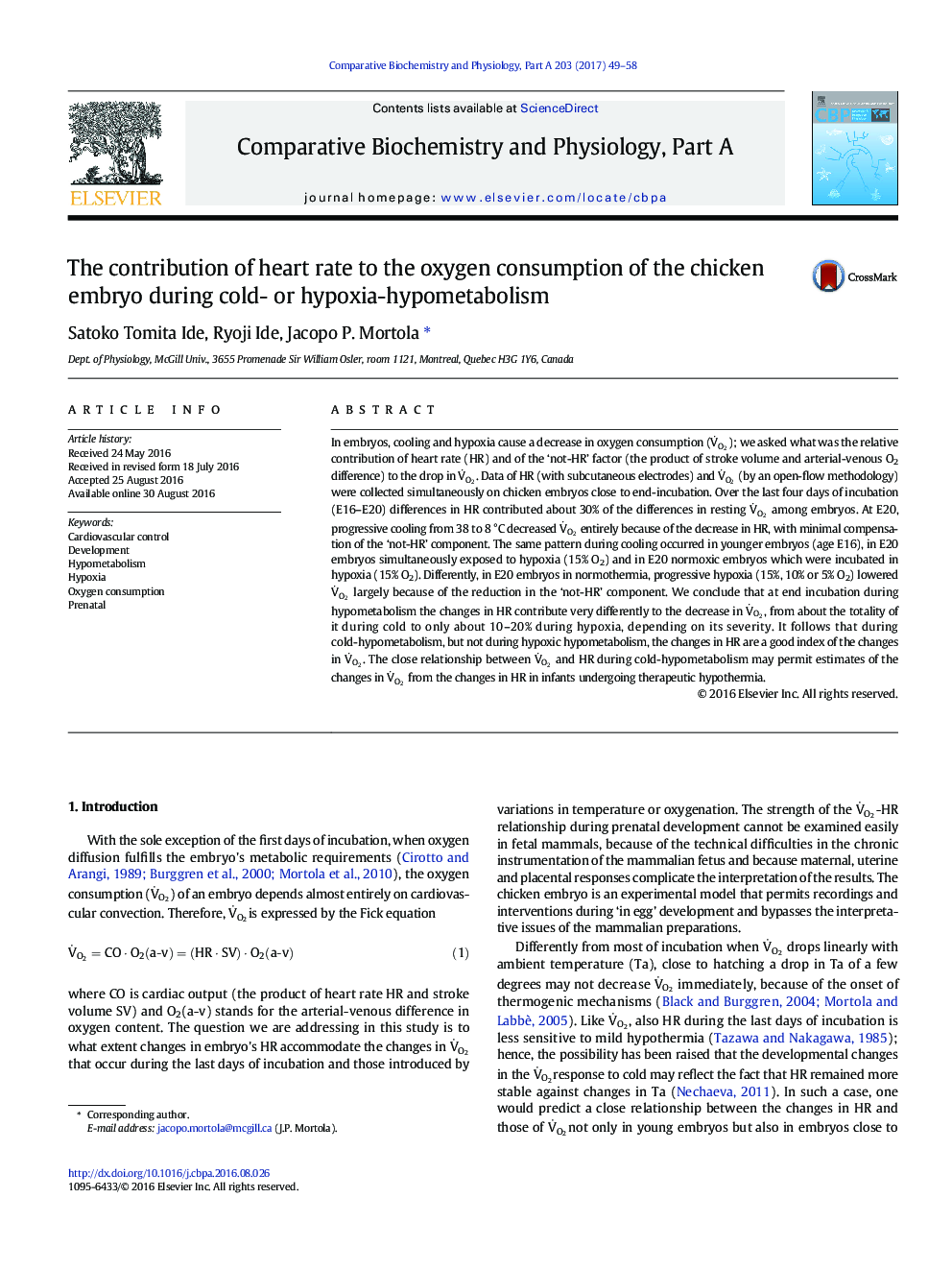| Article ID | Journal | Published Year | Pages | File Type |
|---|---|---|---|---|
| 1971792 | Comparative Biochemistry and Physiology Part A: Molecular & Integrative Physiology | 2017 | 10 Pages |
In embryos, cooling and hypoxia cause a decrease in oxygen consumption (V̇O2); we asked what was the relative contribution of heart rate (HR) and of the ‘not-HR’ factor (the product of stroke volume and arterial-venous O2 difference) to the drop in V̇O2. Data of HR (with subcutaneous electrodes) and V̇O2 (by an open-flow methodology) were collected simultaneously on chicken embryos close to end-incubation. Over the last four days of incubation (E16–E20) differences in HR contributed about 30% of the differences in resting V̇O2 among embryos. At E20, progressive cooling from 38 to 8 °C decreased V̇O2 entirely because of the decrease in HR, with minimal compensation of the ‘not-HR’ component. The same pattern during cooling occurred in younger embryos (age E16), in E20 embryos simultaneously exposed to hypoxia (15% O2) and in E20 normoxic embryos which were incubated in hypoxia (15% O2). Differently, in E20 embryos in normothermia, progressive hypoxia (15%, 10% or 5% O2) lowered V̇O2 largely because of the reduction in the ‘not-HR’ component. We conclude that at end incubation during hypometabolism the changes in HR contribute very differently to the decrease in V̇O2, from about the totality of it during cold to only about 10–20% during hypoxia, depending on its severity. It follows that during cold-hypometabolism, but not during hypoxic hypometabolism, the changes in HR are a good index of the changes in V̇O2. The close relationship between V̇O2 and HR during cold-hypometabolism may permit estimates of the changes in V̇O2 from the changes in HR in infants undergoing therapeutic hypothermia.
